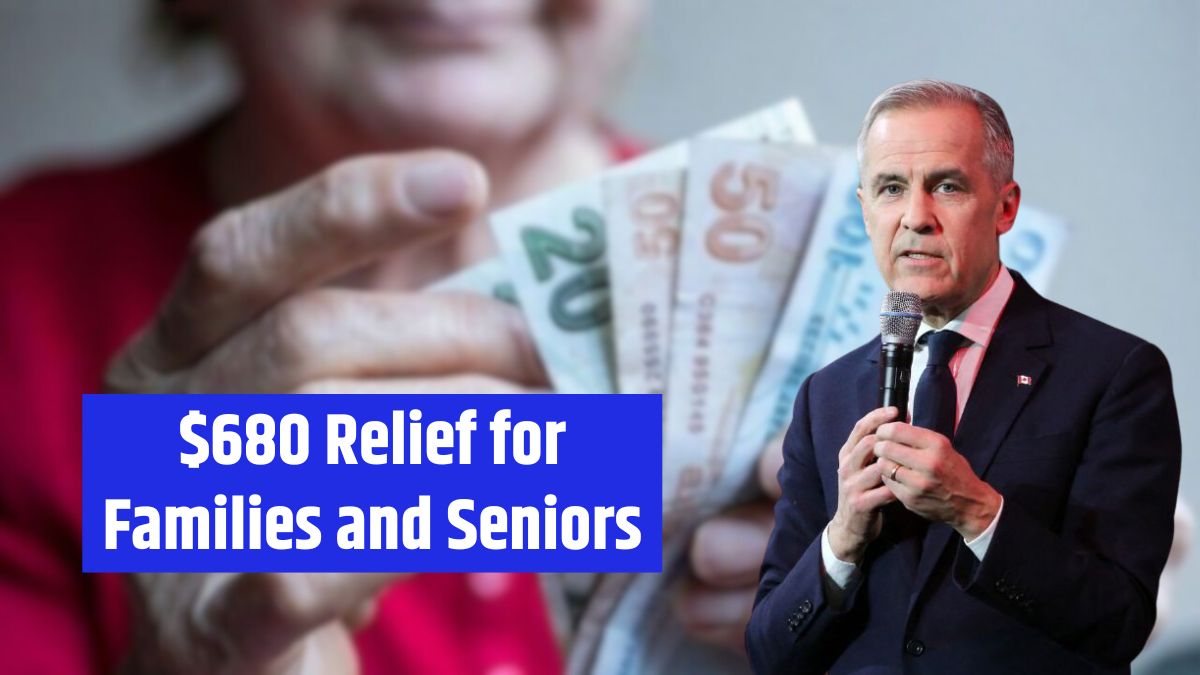The Government of Canada has confirmed a $680 one-time payment for eligible Canadians in September 2025. The program, administered by the Canada Revenue Agency (CRA), is designed to help low- and middle-income households struggling with the rising cost of food, rent, utilities, and other essentials.
Distinct from Recurring Benefits
Unlike regular programs such as the Canada Child Benefit (CCB) or the GST/HST Credit, this $680 relief is a standalone, one-time measure. It provides immediate, tax-free financial support and does not reduce or affect other benefits. Eligibility will be determined using the 2024 income tax return, ensuring the funds reach those who need them most.
Why the $680 Relief Matters
Rising Cost of Living in Canada
Over the past year, Canadians have faced continued inflation. Food prices have increased by over 6%, while housing and utilities remain high. For families, seniors, and workers, these expenses are eroding household budgets.
Support for Vulnerable Groups
The $680 one-time payment is expected to provide crucial short-term relief. For families, it can help with groceries or school expenses; for seniors, it may cover healthcare or heating bills; for workers, it can support rent or transportation needs.
Key Features of the $680 One-Time Payment
| Detail | Information |
|---|---|
| Administered By | Canada Revenue Agency (CRA) |
| Program Type | One-time financial relief |
| Amount | $680 |
| Payment Month | September 2025 |
| Delivery Method | Direct deposit / Mailed cheque |
| Application Required | No – automatic |
| Tax Status | Non-taxable |
| Eligibility Basis | 2024 income tax return & Canadian residency |
Eligibility Rules for the $680 Relief
CRA Requirements
To qualify for the September 2025 benefit, applicants must meet the following conditions:
- Be a Canadian resident for tax purposes.
- Have filed their 2024 income tax return before the deadline.
- Belong to the low- or middle-income range defined by the government.
- Be part of groups most affected by rising living costs, such as families, seniors, or low-wage workers.
Groups Most Likely to Benefit
- Families managing education, food, and housing costs.
- Seniors living on fixed incomes, including those relying on CPP or OAS.
- Low- to middle-income workers balancing household expenses.
- Single parents under financial pressure from daily essentials.
How CRA Will Deliver the $680 Payment
Direct Deposit – The Preferred Option
The CRA will distribute most payments through direct deposit. This method is faster, more secure, and ensures funds are transferred directly into recipients’ bank accounts.
Cheque by Mail – Traditional Option
For those who have not set up direct deposit, the payment will be delivered via mailed cheque to the address registered with CRA. This method may take longer, and the government recommends updating banking details online for efficiency.
Steps Canadians Should Take to Receive Payment
Ensuring Smooth Delivery
To avoid delays, the CRA has urged Canadians to:
- File the 2024 tax return on time – the CRA will use it to confirm eligibility.
- Verify banking information in CRA MyAccount.
- Opt for direct deposit instead of cheque delivery.
- Update mailing addresses to ensure cheques reach the right location.
By following these steps, Canadians can ensure timely receipt of the benefit.
Why the Payment Is Tax-Free
Non-Taxable Classification
The $680 one-time payment is fully non-taxable, meaning Canadians keep the entire amount. It will not be added to taxable income and will not affect benefits such as OAS, CCB, or GST/HST credits.
More Flexibility for Households
This ensures recipients can use the full payment for immediate needs—whether groceries, school supplies, heating bills, or rent—without worrying about deductions or reduced entitlements.
Program Highlights
| Aspect | Details |
|---|---|
| Payment Confirmation | Yes – confirmed for September 2025 |
| Application Requirement | None – automatic disbursement |
| Impact on Other Benefits | No effect on OAS, CCB, GST/HST |
| Target Groups | Families, seniors, low- and middle-income Canadians |
| Benefit Type | Tax-free, one-time assistance |
Broader Context of the $680 Relief
Temporary but Targeted Support
The relief is part of the federal government’s broader strategy to provide short-term financial support during economic uncertainty. While not a permanent solution to affordability challenges, it reflects the government’s recognition of household struggles.
Why CRA Was Chosen for Delivery
By using the CRA as the delivery channel, the government ensures efficiency, transparency, and fairness. The program is structured to be automatic, straightforward, and quick, minimizing red tape for Canadians in need.
5 FAQs on $680 One-Time Payment September 2025
Q1. When will Canadians receive the $680 one-time payment?
The payment will be issued in September 2025, either by direct deposit or mailed cheque.
Q2. Who qualifies for the $680 benefit?
Canadians who are residents for tax purposes, filed their 2024 tax return, and fall within the low-to-middle income range.
Q3. Do I need to apply for this payment?
No. The CRA will issue the payment automatically based on 2024 tax records.
Q4. Is the $680 benefit taxable?
No. The payment is non-taxable, meaning recipients keep the full amount and it will not affect other benefits.
Q5. How will payments be made?
Payments will be made through direct deposit to registered bank accounts or by cheque by mail for those without direct deposit set up






